Tuesday
Dharma TeachingsHuman Drala
COLUMN: Dharma Teachings
by Russell Rodgers, Nelson, B.C.
Sometimes one encounters people or places that cut through one’s habitual chain of thoughts. The Tibetan word for that is “drala”, which means “above the enemy”. In this case the enemy is our cocoon of gossipy thoughts that keeps us separated from the beauty of the world. Practitioners who are familiar with the term drala often associate it with places that have power for us: they provoke a sense of primal vastness and spaciousness. Perhaps they provoke awe, or a sense of beauty. Size is not the issue here — it could be a mountain top, a mossy forest, or a drop of dew. Whatever it is, one feels that it is basically good.
Editor’s Note: We are currently on hiatus from publishing new articles; in the meantime, please enjoy this classic item reprinted from our back issues.
Do you have human dralas in your life? Did they melt your discursiveness? Did they transmit basic goodness in their being? Perhaps this transmission took the form of warmth and compassion. Or perhaps it was wakeful awareness, a sense of big mind. Maybe it took the form of active intelligence, curiosity and engagement with the world. How did you recognize that transmission? How did you sense that it was important? What did it awaken in you?
Such people have a certain power: they awaken basic goodness and arouse respect. They become examples and social reference points. Abraham Lincoln is an American example. When his name is mentioned, people who know his story experience images of sensitivity, kindness, clear seeing and confidence in basic goodness. The drala quality of Abraham Lincoln is his ability to bring an experience of basic goodness, or at least images of it, into our minds. Abraham Lincoln and the qualities that he evokes are powerful reference points for how Americans feel about their society.
Winston Churchill is a British example of human drala. He possessed the self-knowledge not to waver in difficult circumstances. At the mention of his name, we have a momentary flash of courage and calm.
People of a given society often feel deep reverence for their founding fathers or mothers. Perhaps some historian will find that some of them were really fakes – operating from ulterior motives that were remote from basic goodness. In a sense, that doesn’t matter. Their drala quality is in the communication of basic goodness to us: their present ability to cut through our discursiveness and touch our own latent basic goodness. This kind of transmission always happens in the now. Perhaps it is really the generic dralas of basic goodness speaking, and we identify them as ancestral figures.
For me, Chogyam Trungpa Rinpoche is a drala. At the thought of him, I experience for a moment the tremendous spaciousness and wakefulness of his mind. Maybe it is the Chogyam Trungpa of my own mind that I’m experiencing, or maybe it’s a universal guru principle that’s beyond the purely personal. In any case, the memory of him awakens the experience of spacious awareness on the spot.
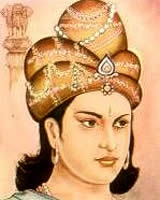 Chogyam Trungpa Rinpoche mentions four ancestral sovereigns that serve as dralas for their respective countries. Each tuned into a different aspect of basic goodness. In ancient India, around 250 BC, the emperor Ashoka came to power in violent circumstances. Filled with regret, he established an empire based on kindness. He erected many pillars that are still standing, bearing his edicts. Many of these are about kindness and respect in one form or another. His emblem adorns the Indian flag today. For Indians, his name evokes compassion and enlightened statesmanship.
Chogyam Trungpa Rinpoche mentions four ancestral sovereigns that serve as dralas for their respective countries. Each tuned into a different aspect of basic goodness. In ancient India, around 250 BC, the emperor Ashoka came to power in violent circumstances. Filled with regret, he established an empire based on kindness. He erected many pillars that are still standing, bearing his edicts. Many of these are about kindness and respect in one form or another. His emblem adorns the Indian flag today. For Indians, his name evokes compassion and enlightened statesmanship.
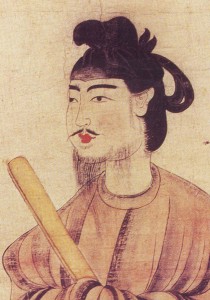 In Japan, around 600 AD, Prince Shotoku outlined principles of government that recognized that everyone had buddha nature. He said that officials in government had a duty to serve the people first and themselves second. He took the mahayana notion that buddha nature resides in everyone, regardless of social class, and combined that idea with the Confucian ideal of harmony, respect and good governance. This combination became the basis for his seventeen article “constitution”, which had a profound influence on Japanese society. He is known as the “Father of Japan”.
In Japan, around 600 AD, Prince Shotoku outlined principles of government that recognized that everyone had buddha nature. He said that officials in government had a duty to serve the people first and themselves second. He took the mahayana notion that buddha nature resides in everyone, regardless of social class, and combined that idea with the Confucian ideal of harmony, respect and good governance. This combination became the basis for his seventeen article “constitution”, which had a profound influence on Japanese society. He is known as the “Father of Japan”.
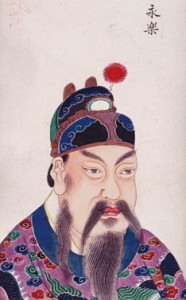 In China, during the Ming Dynasty, around 1400 AD, the Yung-lo Emperor developed the aspect of basic goodness that involves curiosity, exploration and learning. He created a library containing all the knowledge that existed, and encouraged the arts for which that dynasty is famous. He sent an armada of huge wooden ships, many times the size of the European ships that discovered the New World, on peaceful voyages throughout Southeast Asia, the Middle East, India and Africa. These voyages stemmed not from desire to conquer, but from a genuine quest for knowledge and contact with other cultures. He built the Forbidden City, which contains Tienamin Square. This remains an emblem for how Chinese people feel about their culture.
In China, during the Ming Dynasty, around 1400 AD, the Yung-lo Emperor developed the aspect of basic goodness that involves curiosity, exploration and learning. He created a library containing all the knowledge that existed, and encouraged the arts for which that dynasty is famous. He sent an armada of huge wooden ships, many times the size of the European ships that discovered the New World, on peaceful voyages throughout Southeast Asia, the Middle East, India and Africa. These voyages stemmed not from desire to conquer, but from a genuine quest for knowledge and contact with other cultures. He built the Forbidden City, which contains Tienamin Square. This remains an emblem for how Chinese people feel about their culture.
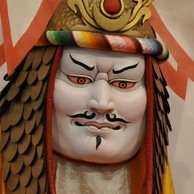 In Tibet, probably sometime around the eleventh century, King Gesar went to war against the corrupting influences that were bringing a dark age to his part of Tibet. He is depicted as riding the energy of nowness or lungta, as symbolized by his magical horse. You can find his image today on many prayer flags. If you Google “Gesar” you will find many examples on YouTube of his epic still being performed in modern Tibet. For most Tibetans, Gesar is a drala. When a Tibetan or a Shambhalian needs to raise lungta or life energy, they can invoke him and tap into his energy.
In Tibet, probably sometime around the eleventh century, King Gesar went to war against the corrupting influences that were bringing a dark age to his part of Tibet. He is depicted as riding the energy of nowness or lungta, as symbolized by his magical horse. You can find his image today on many prayer flags. If you Google “Gesar” you will find many examples on YouTube of his epic still being performed in modern Tibet. For most Tibetans, Gesar is a drala. When a Tibetan or a Shambhalian needs to raise lungta or life energy, they can invoke him and tap into his energy.
In my own case, my father was a scientist. He wasn’t particularly spiritual. He believed in the power of thought and concept, and he went to a lot of effort to live in that world. If it couldn’t be proved scientifically and objectively, its existence was doubtful. But underlying that was a basic intelligence and curiosity about how the world worked. I have a picture of him in his pajamas after he had succumbed to dementia. He is in a wheel chair on the back lawn, gazing raptly at something in the trees. His curiosity and wonder are completely open and engaged in that moment. That was the drala aspect of him that was part of my own formation as a son. It lives on for me, and I thank him for that.
All of us have human dralas in our lives, or we wouldn’t be on a spiritual path to rediscover the basic goodness that they introduced us to. If you think about it, you are also drala, in so far as you are in touch with your own basic goodness and can transmit that to your family and friends. The effect of meeting drala is that the cocoon of thought subsides, allowing others to touch in with present awareness and the unadorned experience of nowness and basic goodness. You might even ask, “after I die, which of my drala elements will live on?”
 ~~
~~
Russell Rodgers has been wondering about this kind of topic for the 37 years that he has been practicing. He resides in the Kootenay mountains of British Columbia, in the town of Nelson, and is supporting the Dharma Teachings column on the Shambhala Times with occasional articles.

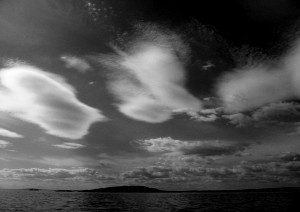
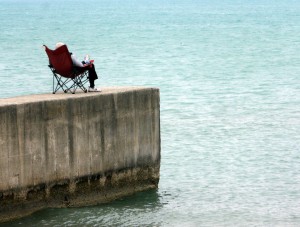




Dec 20, 2018
Reply
Churchill is an interesting example, because he was flawed….that is to say, he was human. I think we have to allow human dralas to be flawed; otherwise they wouldn’t be human.
I didn’t know the 16th Karmapa, so I’m ignorant of his flaws. Drala was there when he entered the room. And his smile was absolutely gigantic.
Dec 19, 2018
Reply
I think that humans can embody the drala principle but I would never think to say a human drala; drala to me is more the vast realm of self-existing energy and wakefulness embodied in the environment, in art sometimes, in awakening to a moment’s vividness.
I get what you are saying though immensely – there were moments of such tenderness and wakefulness during the last moments of my parents lives that I shared with them. Also, there are people who do possess a capacity to emanate wakefulness and ordinary mind in a way that opens you up on the spot. I find the quality of openness to others within myself, when not all caught up in my habitual pattenrs, that creates a sense of unobscurred, beginner’s mind for me. People are amazingly evocative and can call forth other’s basic goodness in ways we might not expect. The sentience of a scruffy bearded homeless person walking down the street; the compassion that arises when we see ugly people being turned in on themselves and so much more.
Whatever the words that are used people bring us into a place of immense sentience and love.
Jul 9, 2013
Reply
I was struck by the title, “Human Dralas”. Usually I feel drala when I am outdoor or in nature. And just now a little yellow finch tapped in my window…and I see quite a few human dralas in my life…wonderful.
Jul 8, 2013
Reply
Thank you Russ! I enjoyed the tour of our lineage dralas and the invitation to notice the ‘first thought, best thought’ impact that certain names arouse. I appreciate thinking of both distant and near people in our lives as personal dralas.
Jul 1, 2013
Reply
I very much enjoyed reading your article. I like the suggestion to consider people in relation to drala principal. Considering ourselves and each other as drala could help us become more sensitive to the “feeling” quality of life. Thank you for this timely offering.
Jun 29, 2013
Reply
Thank you for this article. It is wonderful.
Jun 29, 2013
Reply
I would add Nelson Mandela to the list.
Jun 28, 2013
Reply
There is no doubt that Churchill was an inspiring war leader in the circumstances, partly created by Britain and France especially, that led to the ride of the Nazis and the Second World War.However the question of his Drala like power can be exaggerated I believe.
As Home Secretary he ordered troops to fire on striking miners, and he was swept from office in 1945 by a Labour landslide, so personally I think that Drala would have to be shared at least with the British people and great social democrat and socialist leaders such as Atlee, Bevin, and Nye Bevan.
Churchill is also an icon for the British Right and held up as example by Thatcher and the present shower of reprobates.Once again I think we should be careful with such figures and other right-wing creeds ,although I appreciate there are subtleties involved.
Thanks for the article anyway which is instructive and thought-.provoking